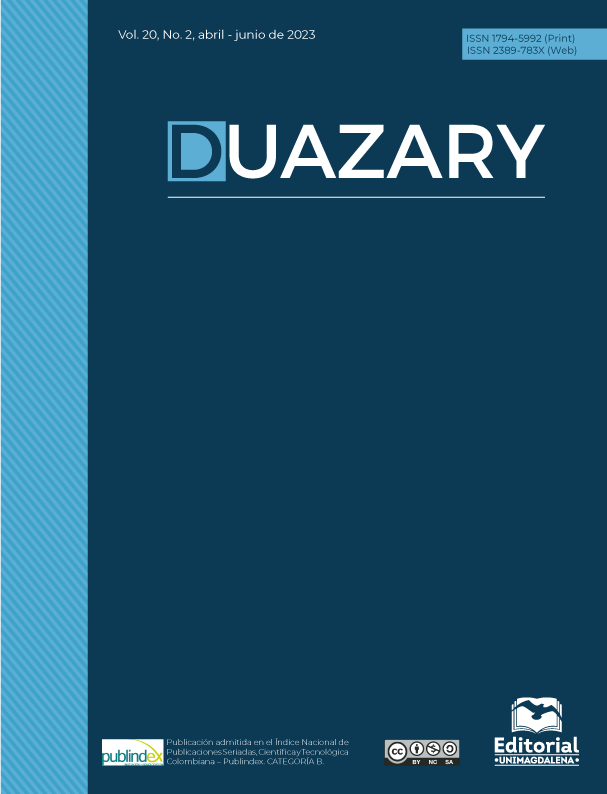Sepsis: las dos caras de la moneda
Contenido principal del artículo
Resumen
El término sepsis deriva del griego ‘sipsis’ que significa putrefacción o decadencia de la materia orgánica. Como término médico, el concepto de sepsis ha estado en constante cambio. La definición actual derivada del Tercer Consenso Internacional de definiciones de sepsis del año 2016 considera como una disfunción de órganos que amenaza la vida, causada por una desregulación de la respuesta del hospedador a una infección
Descargas
Detalles del artículo

Esta obra está bajo una licencia internacional Creative Commons Atribución-NoComercial-CompartirIgual 4.0.
No se permite un uso comercial de la obra original ni de las posibles obras derivadas, la distribución de las cuales se debe hacer con una licencia igual a la que regula la obra original.
Citas
Singer M, Deutschman CS, Seymour C, Shankar-Hari M, Annane D, Bauer M, et al. The third international consensus definitions for sepsis and septic shock (sepsis-3). JAMA. 2016;315:801-810. https://doi.org/10.1001/jama.2016.0287
te Marvelde L, Whitfield A, Shepheard J, Read C, Milne RL, Whitfield K. Epidemiology of sepsis in cancer patients in Victoria, Australia: A population‐based study using linked data. Aust N Z J Public Health. 2020;44(1):53-58. https://doi.org/10.1111/1753-6405.12935
Kempker JA, Martin GS. The changing epidemiology and definitions of sepsis. Clin Chest Med. 2016;37(2):165-179. https://doi.org/10.1016/j.ccm.2016.01.002
Rosolem MM, Rabello LSCF, Lisboa T, Caruso P, Costa RT, Leal JVR, et al. Critically ill patients with cancer and sepsis: Clinical course and prognostic factors. J Crit Care. 2012;27(3):301-307. https://doi.org/10.1016/j.jcrc.2011.06.014
Chen SCA, Marriott D, Playford EG, Nguyen Q, Ellis D, Meyer W, et al. Candidaemia with uncommon Candida species: Predisposing factors, outcome, antifungal susceptibility, and implications for management. Clin Microbiol Infection. 2009;15(7):662-669. https://doi.org/10.1111/j.1469-0691.2009.02821.x
Vázquez-Olvera R, Volkow P, Velázquez-Acosta C, Cornejo-Juárez P. Candida bloodstream infection in patients with cancer: A retrospective analysis of an 11-year period. Rev Iberoam Micol. 2023;40(1):3-9. https://doi.org/10.1016/j.riam.2022.12.002
Loughlin KR. William B. Coley: His hypothesis, his toxin, and the birth of immunotherapy. Urol Clin. 2020;47(4):413-417. https://doi.org/10.1016/j.ucl.2020.07.001
Han J, Gu X, Li Y, Wu Q. Mechanisms of BCG in the treatment of bladder cancer-current understanding and the prospect. Biomed Pharmacother. 2020;129:110393. https://doi.org/10.1016/j.biopha.2020.110393
Choe A, Mutsaers A, Rodrigues G, Chin J, Leung S, Winquist E. Spontaneous remission of metastatic castration-resistant prostate cancer: Coley’s toxin revisited? Cureus. 2022; 14(12):e32505. https://doi.org/10.7759/cureus.32505
Sollini M, Gelardi F, Carlo-Stella C, Chiti A. Complete remission of follicular lymphoma after SARS-CoV-2 infection: From the “flare phenomenon” to the “abscopal effect.” Eur J Nucl Med Mol Imaging. 2021;48(8):2652-2654. https://doi.org/10.1007/s00259-021-05275-6
Challenor S, Tucker D. SARS-CoV-2-induced remission of Hodgkin lymphoma. Br J Haematol. 2021;192(3):415. https://doi.org/10.1111/bjh.17116
He Y, Liu Y, Liu Y, He H, Liu W, Huang D, et al. A machine-learning approach for prediction of hospital mortality in cancer-related sepsis. Clin eHealth. 2023;6:17-23. https://doi.org/10.1016/j.ceh.2023.06.003
Garduno A, Cusack R, Leone M, Einav S, Martin-Loeches I. Multi-omics endotypes in ICU sepsis-induced immunosuppression. Microorganisms. 2023;11(5):1119. https://doi.org/10.3390/microorganisms11051119

